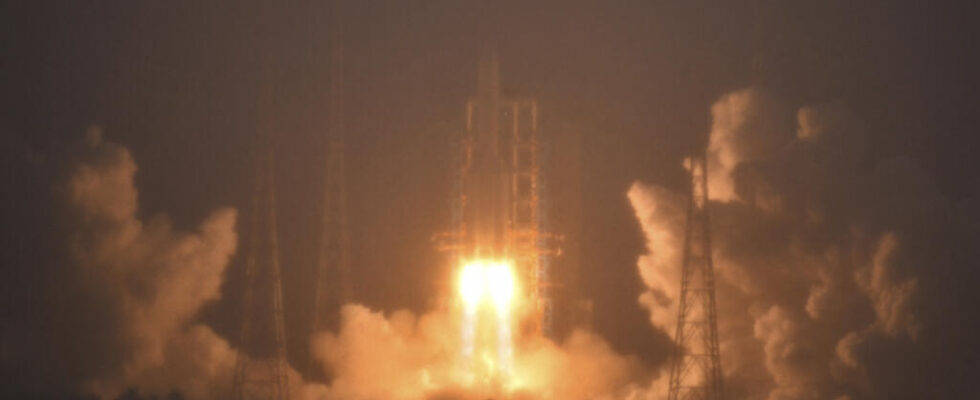For the second time, a Chinese probe landed this Sunday morning on the far side of the moon. The Chang’e-6 probe landed at 6:23 a.m. Beijing time on the lunar South Pole, the China National Space Administration (CNSA) announced. An exploit followed by all Chinese media.
3 mins
With our correspondent in Beijing, Stéphane Lagarde
“ This moon landing is worth 10,000 takeoffs », wrote this Sunday a space enthusiast on the Weibo network in China. Like him, many Chinese set their alarms to ring this morning to witness the arrival of the Chang’e-6 lander on the “ back of the moon ». Poster of the space adventure in hand, this high school student encountered near the Space Institute in Beijing, would not have missed this moment for the world.
“ Landing on the Moon is a truly incredible thing. This is very important for China. We will be able to study lunar rock samples. And then, this time, other nations are participating, this helps with good relations with these countries and it is a sign of the progress we have in space exploration. “, he explains.
48 hours to bring back lunar stones
A moon lens, object of national pride displayed by certain schoolchildren, in taikonaut uniforms, for the “ children’s party » yesterday Saturday in China, or even in these large print posters « land on the moon »from the Chinese Space Administration.
On the technical side, what looks like a soap box on a tripod and wrapped in aluminum foil on animated images broadcast by state media, landed gently near a crater at the South Pole Aitken . This with the support of the Queqiao-2 satellite which rotates around the moon so as to have a visual of the back of the rocky star, as well as a sort of glider which took photos and scanned the surface with a 3D laser. to detect possible obstacles, reports the Chine Nouvelle agency.
The collector robot now has 48 hours to collect lunar stones on the far side, a first. To do this, it has an articulated arm and a mini drill. A race against time, 2 p.m. precisely to do this collection work against 10 p.m. for the previous Chang’e-5 which had brought back samples of the visible side, after Chang’e-4, the first mission on the hidden side in 2019.
China-US space race
Another mission: to study the composition of the hidden surface of the Earth’s natural satellite, with 10 kilos of foreign equipment on board, including the French DORN, a radon gas detector. The rock samples and other observation elements collected on site will then be placed in the module remaining in orbit, before being brought back to earth by the beginning of next July.
China has invested billions of euros in the space race. It now plays in the same category as the United States in terms of space adventure, relying in particular on Tiangong space station operational since last year. A standoff using robots, but also a human epic. Washington plans to set foot on the moon again in 2026. Beijing believes it is ready to do so before 2030.
